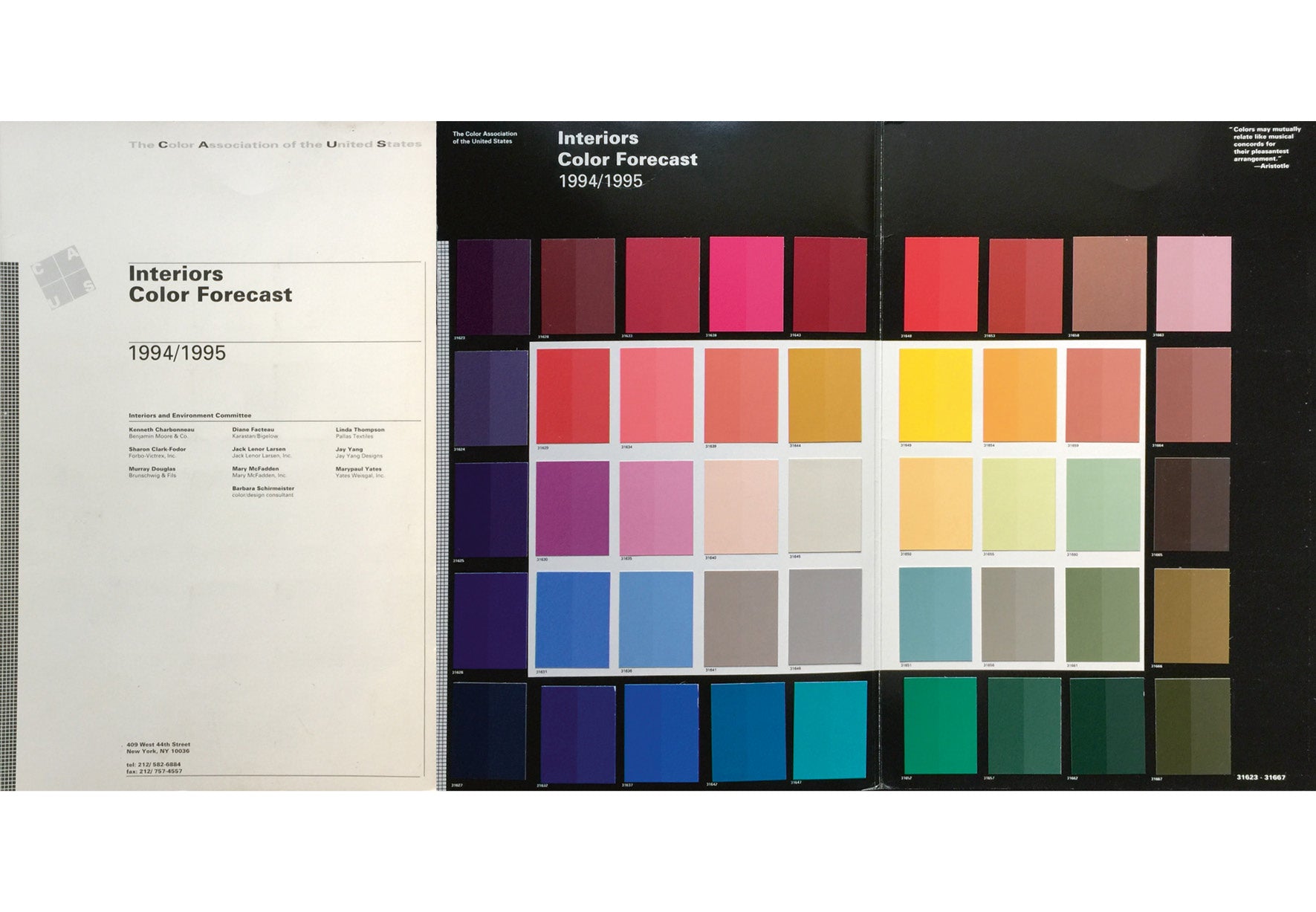Inspiring colour editorial from MIX Magazine.

On colour... Leslie Harrington
As the Executive Director of The Color Association of the United States (CAUS), Leslie Harrington spends her days informing colour decisions in multiple market sectors.
The team at our creative agency Colour Hive spoke to Harrington about the project closest to her heart, creating a digital archive of past trend reports.
For anyone interested in colour, the CAUS archive is a treasure trove of delights. At the time of writing, the archive consisted of over 600 forecast reports featuring more than 17,000 colours and counting…
The reports introduce speciality collections; gloves, hats, shoes hosiery and segues into women, men, youth fashion, interior environments and beauty. The colours throughout are a revelation; everything from a sea of lavender in 1919 to brilliant yellow to celebrate the end of World War II. Even a swift glance at the archives defies preconceptions and reveals an extraordinary legacy of information.

The collection, printed on custom dyed silk, wool, cotton, threads and even leather, had only been seen by archivists and specialists, but it is Harrington’s firm belief that it was just too good to stay in only physical form.
Very rarely can you take a historical journey into colours, let alone a full century. To see the colours grouped together and, in some cases, understand the thinking behind them is a powerful way to capture the spirit of time. The digital archive allows us to do this easily; to dive deep into a year, collection, decade, colour story of our choosing and run analysis on the emergence of colours or trends. It really is a labour of love.
Harrington

Harrington was well placed to undertake this task; she has worked with CAUS for more than 10 years. Originally trained as an interior designer, she previously headed up Benjamin Moore’s colour design department. Essentially, Harrington’s entire career has been spent analysing colour.
For Harrington, one of the primary drivers for building up a comprehensive archive is the opportunity to chart cyclical patterns in the development of colour. The really exciting prospect here is a body of information that could potentially be able to chart the triggers, world events, designers and so on that influence colour decisions, making colour prediction that little bit more accurate.
Intuitively we believe that patterns in colour have always existed, but we just hadn’t had the data to support this hypothesis.
Harrington

One of the surprising effects of gathering this information is the way that hard data challenges lazy ideas about historical colour.
We only ever remember about 10 percent of what goes on and we are selective with our colour memory. You see this even with museum curators who are surprised by the sheer variety of colours at any given time.
Harrington
An exception to this rule of unpredictability is Harrington’s favourite part of the collection, glove colours from the 1950’s. Being so evocative of that era, you really get a clear sense of what was happening colour-wise.

However, Harrington acknowledges that the data, however broad, is incomplete. The trend books don’t reveal which colours sold and which languished on the sale rails, although there are tantalising clues.
Colour stories are all about projecting into the future by building on the successes of the past. You can start to see trajectories and drops when looking at a single colour’s development over the seasons. It’s this circularity that I’m interested in.
Harrington

As a firm believer in the importance of education and sharing knowledge, Harrington sees potential for the archives to be available for a broader audience than CAUS members.
What she is most interested in is getting access to success indications through sales that can then be correlated with the data that CAUS has gathered and to lay it against stock market patterns and economic indicators.
It feels like we are finally unlocking colour DNA; the first sequences are really tough, but after that it gets successively easier.
Harrington
How can we help?
From colour forecasting to colour matching, coating and distribution, we are on hand to help with all your colour needs. Let’s talk!
MIX Magazine is a quarterly print and digital publication by our creative agency, Colour Hive and is available as part of Colour Hive membership.
The Duha Group is a global, industry leading manufacturer of innovative colour marketing tools. We specialise colour strategy, colour matching, colour mass reproduction and colour system management.
Image credits from top:


